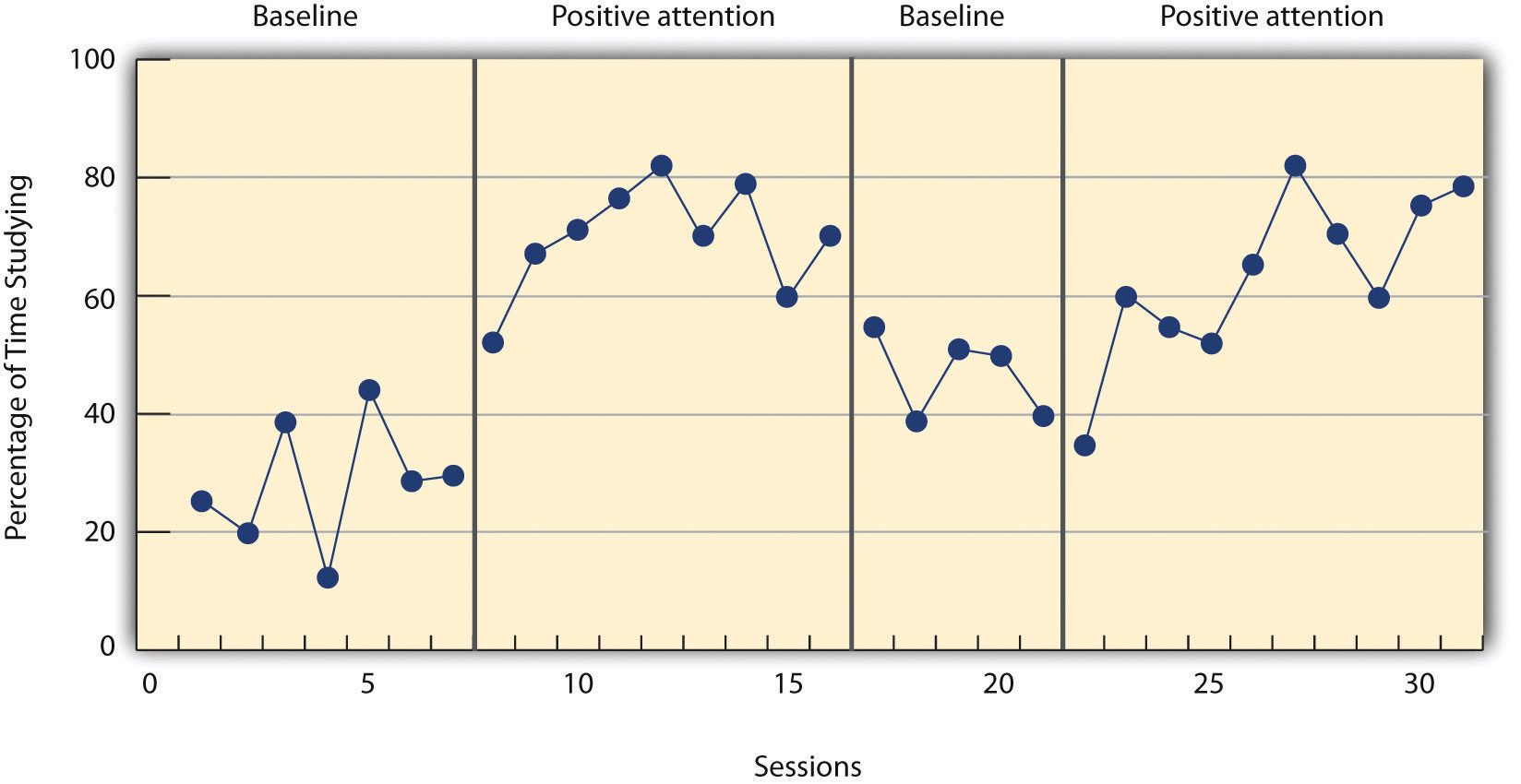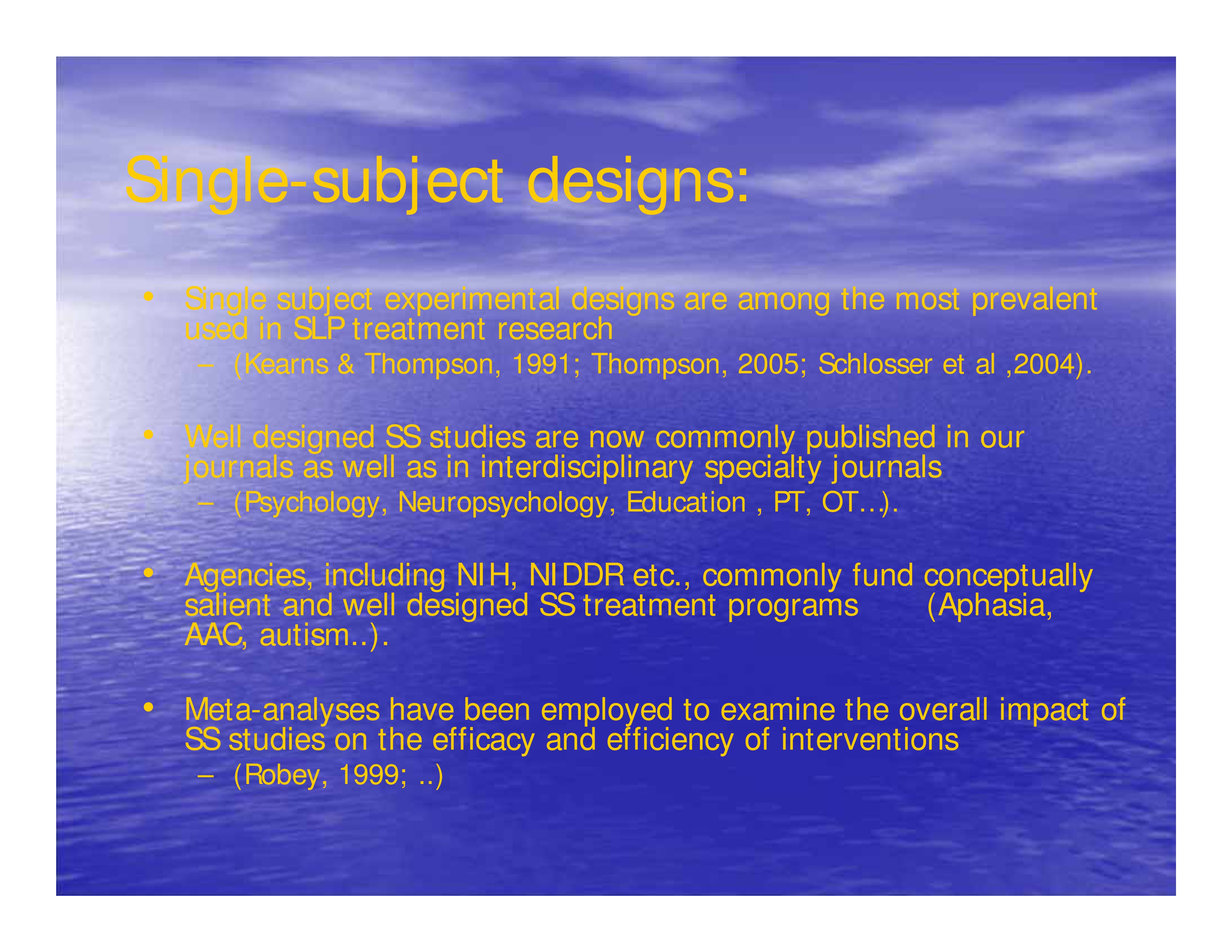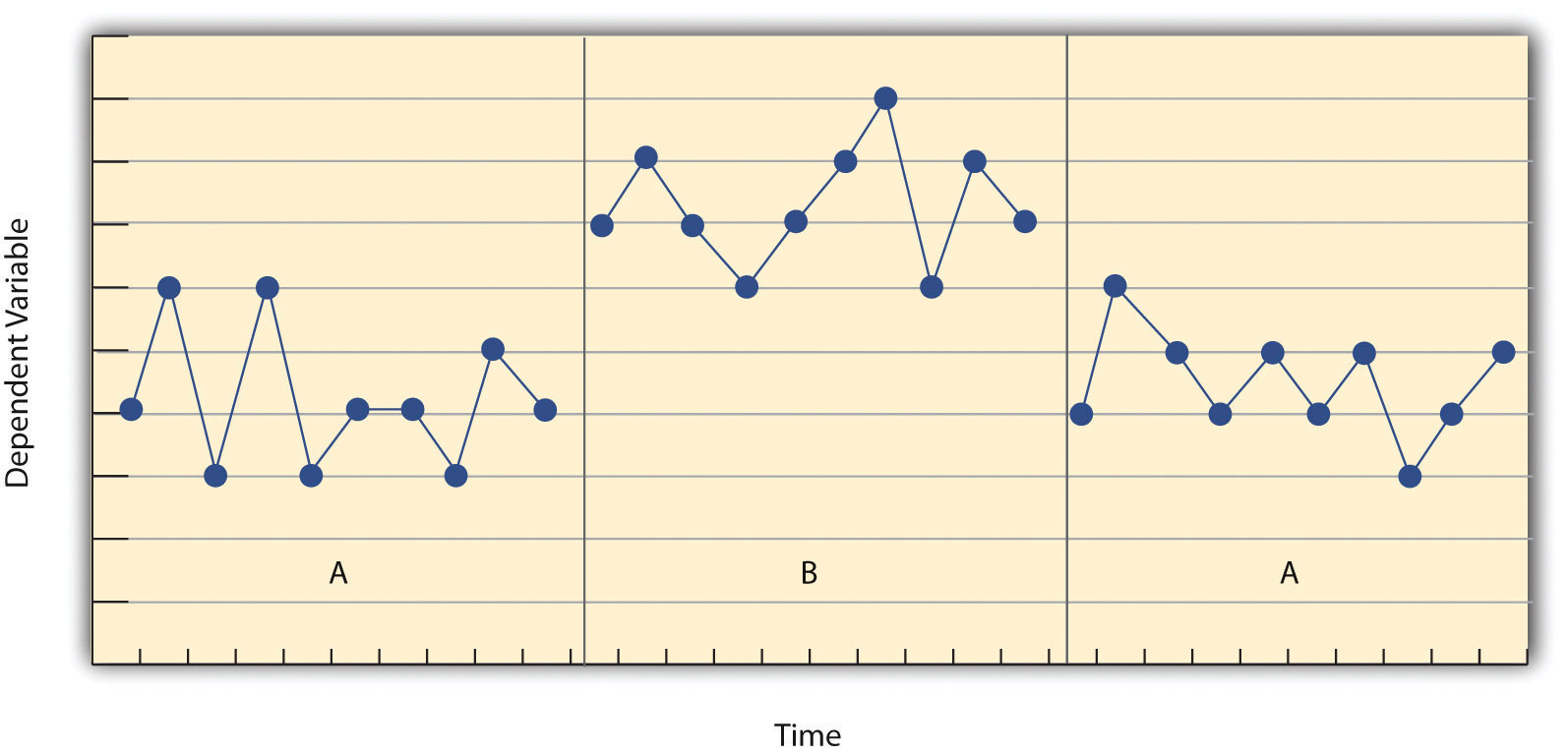During the first phase A a is established for the dependent variable. Single-subject research design has been described as any research involving one subject or one group that is treated as a single entity Hittleman Simon 1997.

Pdf Single Subject Research Designs And Data Analyses For Assessing Elite Athletes Conditioning
The approach for this experimental research is Single Subject Research SSR with A-B-A Baseline-1-Intervention-Baseline-2 design.

. For example single-subject design can be implemented prior to implementing a randomized controlled trial to get a better handle on the magnitude of the effects the workings of the active ingredients and all of that. Single-subject research is a type of quantitative research that involves studying in detail the behaviour of each of a small number of participants. The above example illustrates the single-subject approach.
For example Baseline Treatment No Treatment Baseline Treatment A Return to Baseline Treatment B Return to Baseline Baseline Treatment A Treatment AB Treatment ABC Fade Components of Single-Subject Designs. Single subject research designs are weak when it comes to external validityStudies involving single-subject designs that show a particular treatment to be effective in changing behavior must rely on replicationacross individuals rather than groupsif such results are be found worthy of generalization Fraenkel Wallen 2006 p. 2008 described a simulation modeling analysis for time-series data which allows a statistical comparison between phases of a single-subject experiment while controlling for serial dependency in the data ie quantifying the autocorrelation and modeling it in the analysis.
Single-Subject Designs Characterized by scientific rigor Can demonstrate causal relations Experimental design Effects of different interventions IVs on the same subject Problems that are relatively rare can be studied. Note that the term single - subject does not mean that only one participant is studied. Single-subject researchwhich involves testing a small number of participants and focusing intensively on the behavior of each individualis an important alternative to group research in psychology.
Instead it depends on the participants behavior. In an alternating treatments design A single-subject research design in which multiple treatments are alternated rapidly on a regular schedule two or more treatments are alternated relatively quickly on a regular schedule. Indexes more than 2500 journals.
The y-axis is the measure of the problem were trying to change ie the dependent variable. For example a researcher might establish a baseline of studying behavior for a disruptive student A then introduce a treatment involving positive. Single-subject researchwhich involves testing a small number of participants and focusing intensively on the behavior of each individualis an important alternative to group research in psychology.
Figure 101 Results of a Generic Single-Subject Study Illustrating Several Principles of Single-Subject Research. Factors to be Evaluated Halle is a 16-year-old female who currently resides in foster care. Also included are examples of how to plan and implement a single-case research study in a typical classroom setting.
Use of the ABA design factors to be evaluated treatment variables implementation of the research design data gathering and. An example of a graph from a single-subjects design is shown in Figure 111. Single-subject studies must be distinguished from qualitative research on a single person or small number of individuals.
Its track record in both areas is impressive. Single-subject studies must be distinguished from case studies in which an individual case is described in detail. Example use of a homeless shelter may be cyclical depending on the time of year with increased use in winter months and lower use in summer months.
It is amethod designed to study the behavior of individual organisms. In a multiple-treatment reversal design A single-subject research design in which phases that introduce different treatments are alternated a baseline phase is followed by separate phases in which different treatments are introduced. The following paper presents the use of an ABA single subject research design in evaluating a 16 year old foster youths behavior and the use of an intervention on decreasing negative behavior and increasing positive behavior.
Trend An ascending or descending line. In the end effect detection is determined by data patterns in relation to the. Another important aspect of single-subject research is that the change from one condition to the next does not usually occur after a fixed amount of time or number of observations.
Single Subject Designs There are two broadly defined approaches to experimental research. For example positive attention for studying could be used one day and mild punishment for not studying the next and so on. Benefits of Single Subject Design Study low incidence populations and behaviors Cost effective Evaluate intervention prior to large scale study Flexible design is adaptable to situation Can be conducted in practice settings Test clinical hypotheses Monitor progress in applied settings Limitations of Single Subject Design.
Also called the ABA design. One way to analyze the data from a single-subjects design is to visually examine a graphical representation of the results. Over the past few years she has struggled with a number of behavioral concerns including cutting verbal aggression and physical aggression.
O Typically in single-subject studies the categories of the IV reflect the phases of the treatment or lack of treatment. This research used quantitative approach with experimental research design. As the method continues to evolve and improve it also has become more popular for both scientific and therapeutic purposes.
CHAPTER 7 Single-Subject Design 209 Stable line A line that is relatively flat with little variability in the scores so that the scores fall in a narrow band. The type of disruptive behaviour which becomes the target behaviour in this research is physical aggression against classmates. It is more typical for there to be somewhere between two and 10 participants.
For example Borckardt et al. Since Halle was placed in foster care her verbal and physical aggression has decreased and. Includes information of use to psychologists students and professionals in related fields such as psychiatry management business and education social science neuroscience law medicine and social work.
The x-axis is time as measured in months. This is the level of responding before any treatment is introduced and therefore the baseline phase is a kind of control condition. Group designs single-subject designs Both approaches apply components of the scientific method to their approach to research The difference between group and single-subject designs lies in the manner in which the.
Using repeated observations the effect of an intervention. It is very good to prepare that. The most basic single-subject research design is the.
Single Subject Research Design. PsycInfo is a key database in the field of psychology.
Single Subject Research Designs Research Methods In Psychology 2nd Canadian Edition

Single Subject Research Designs

Issues In Single Subject Research Asha Journals Academy

Pdf Single Subject Research Designs For Disability Research

Single Subject Research Designs

Use Of The Single Subject Design For Practice Based Primary Care Research Postgraduate Medical Journal
Single Subject Research Designs Research Methods In Psychology 2nd Canadian Edition
Single Subject Research Educational Research Basics By Del Siegle
0 comments
Post a Comment